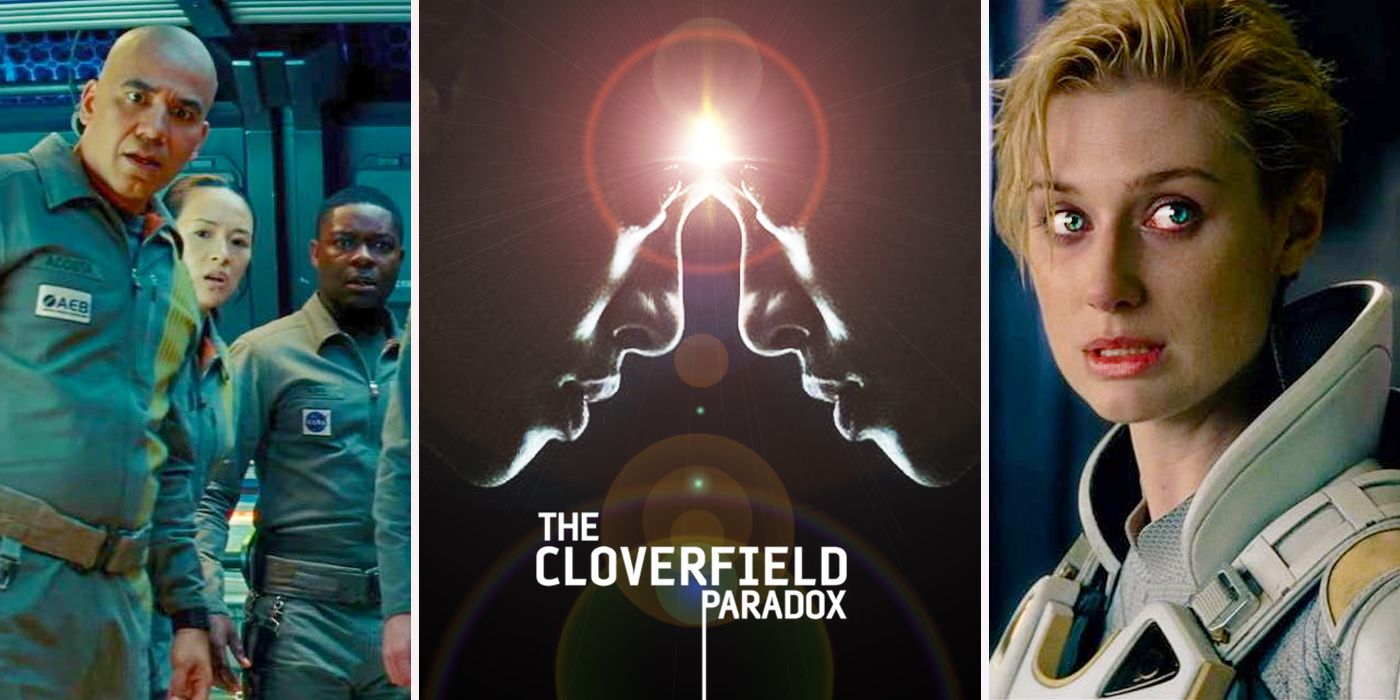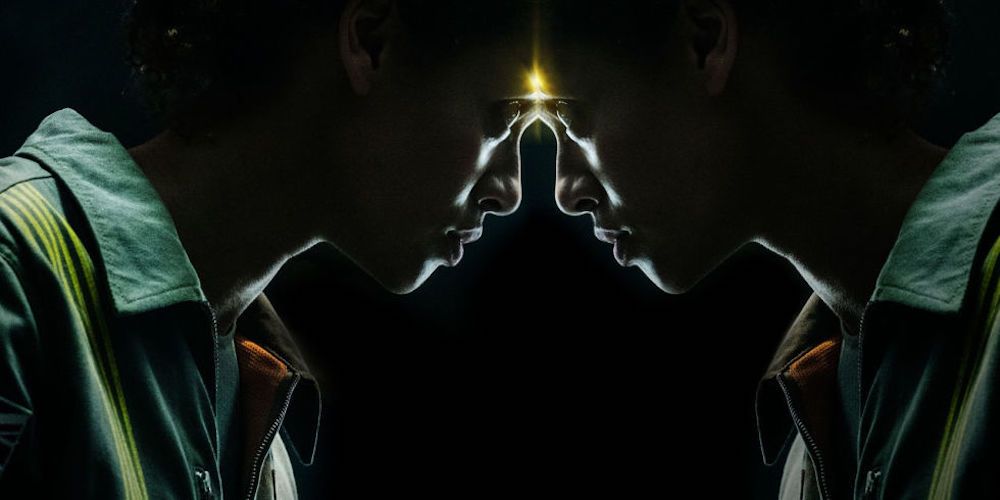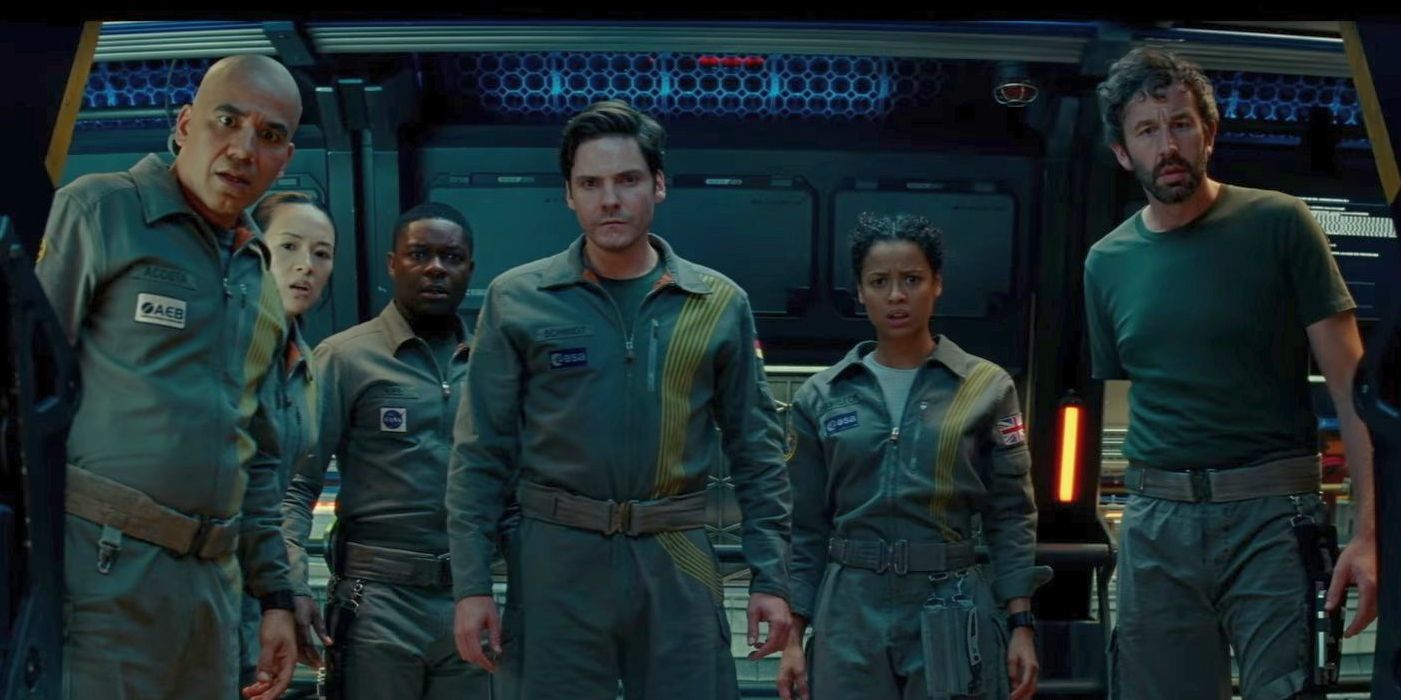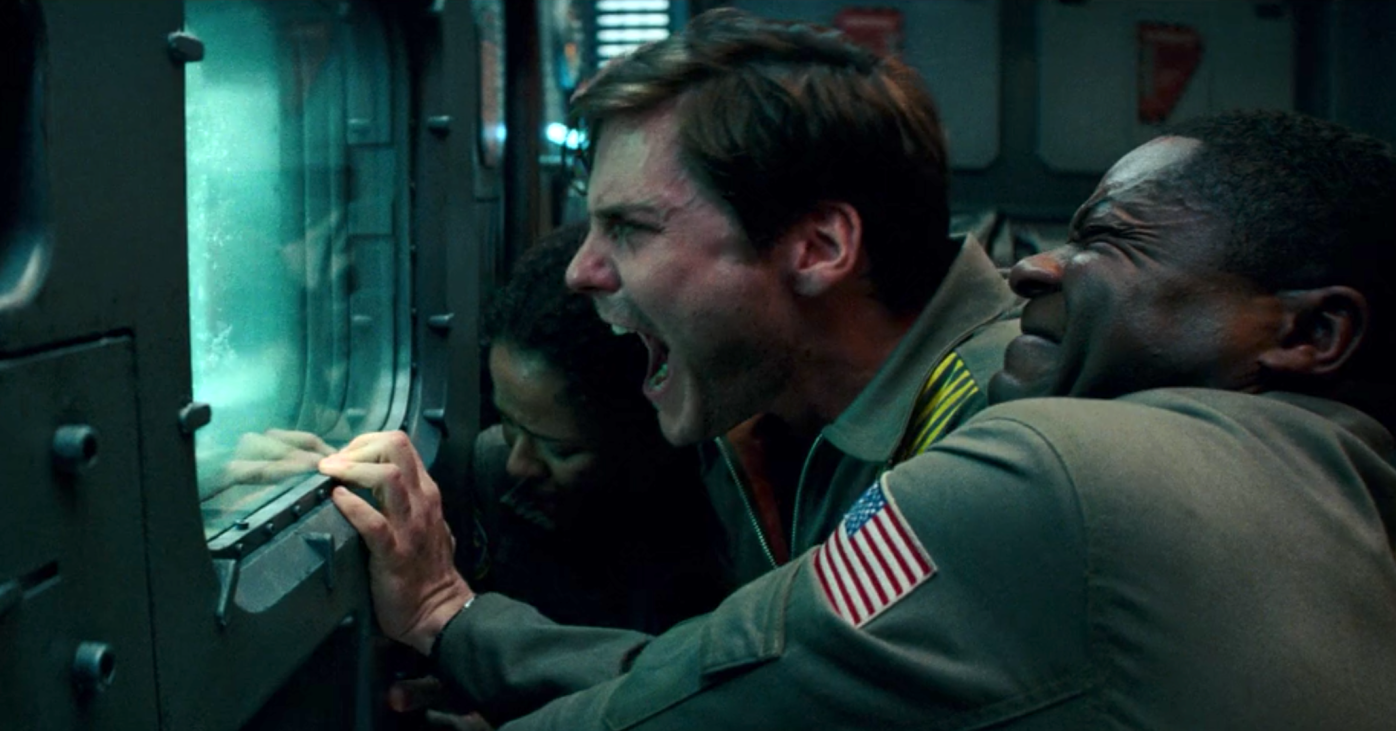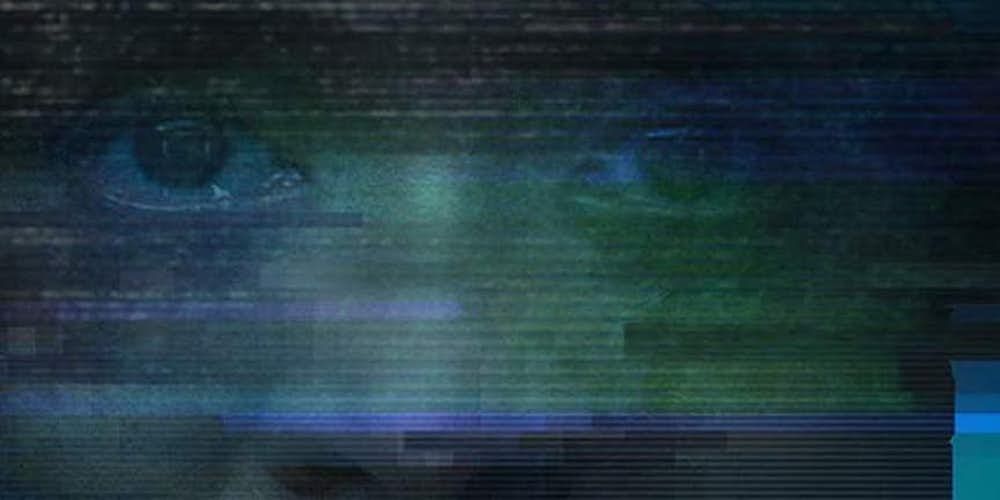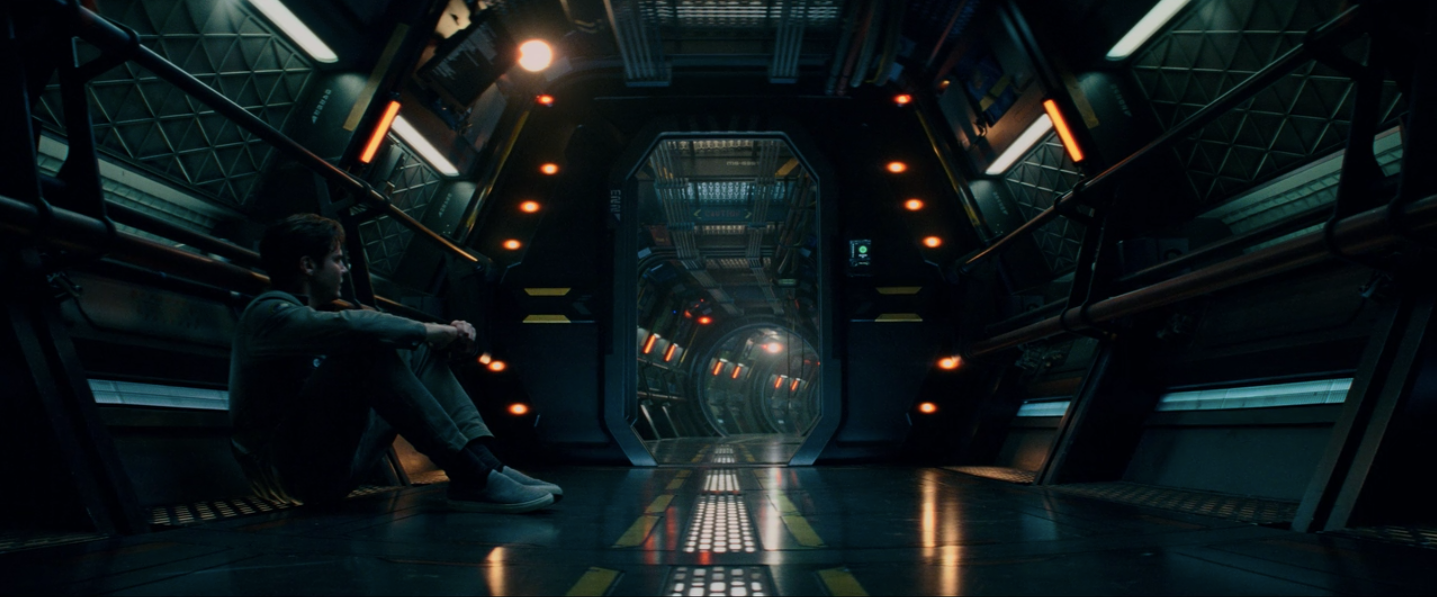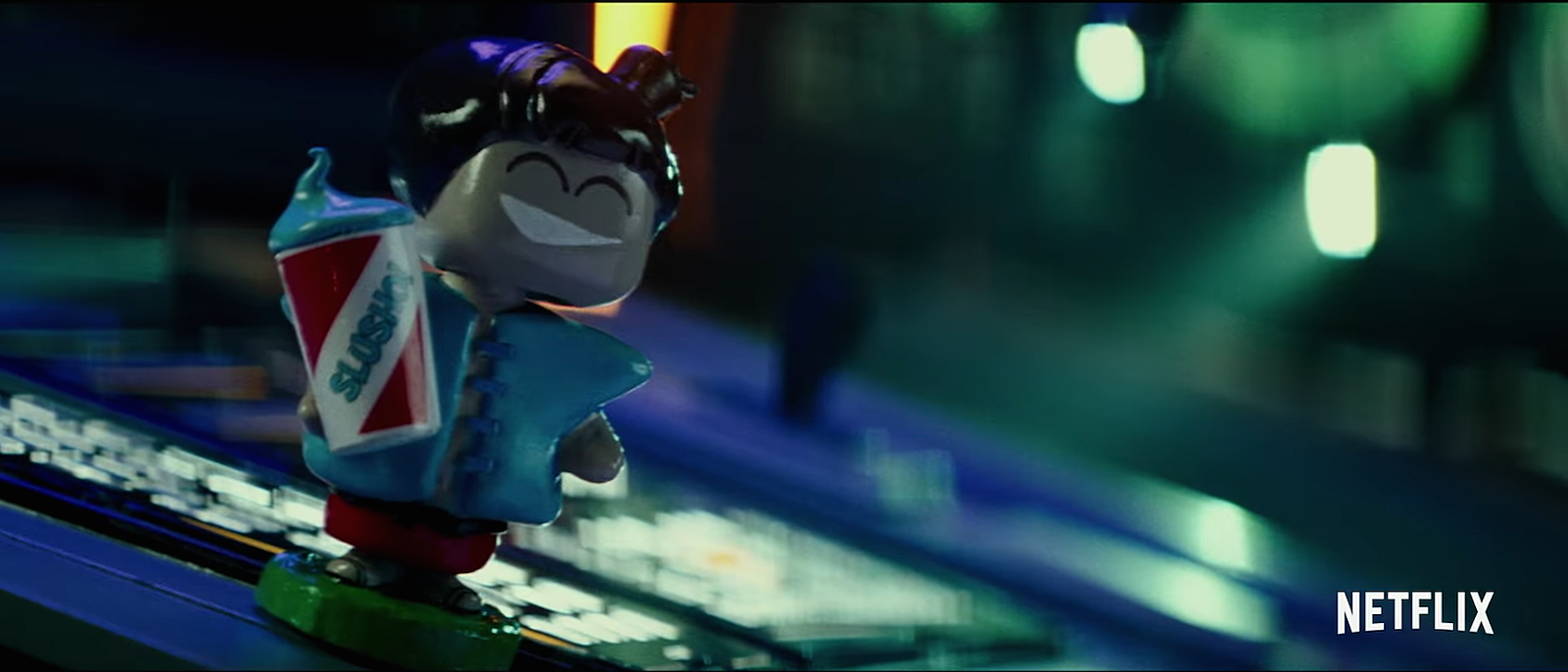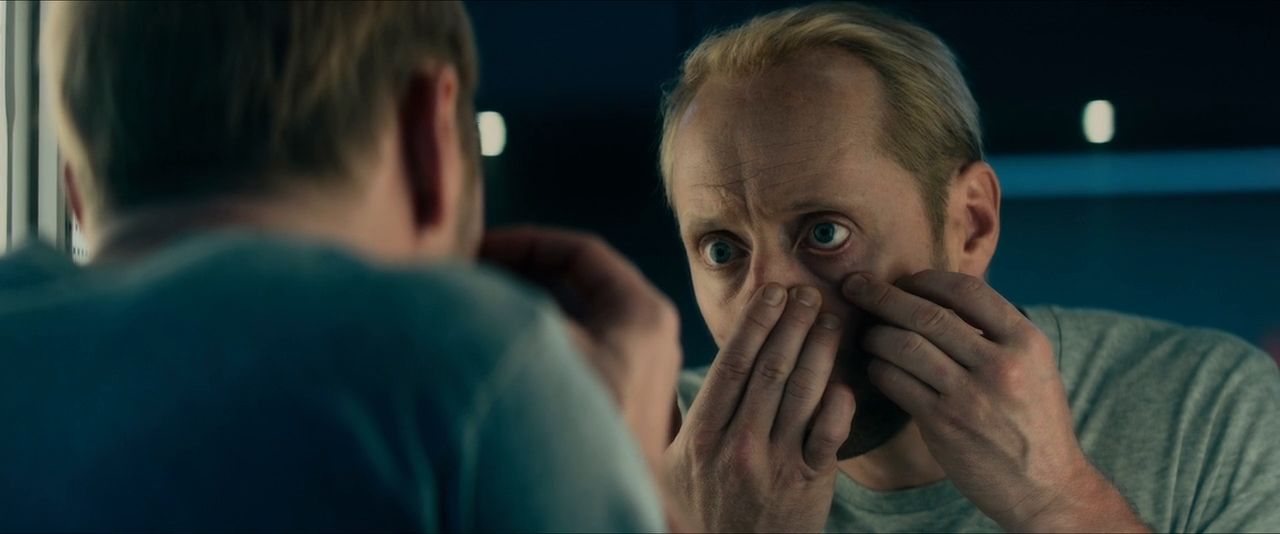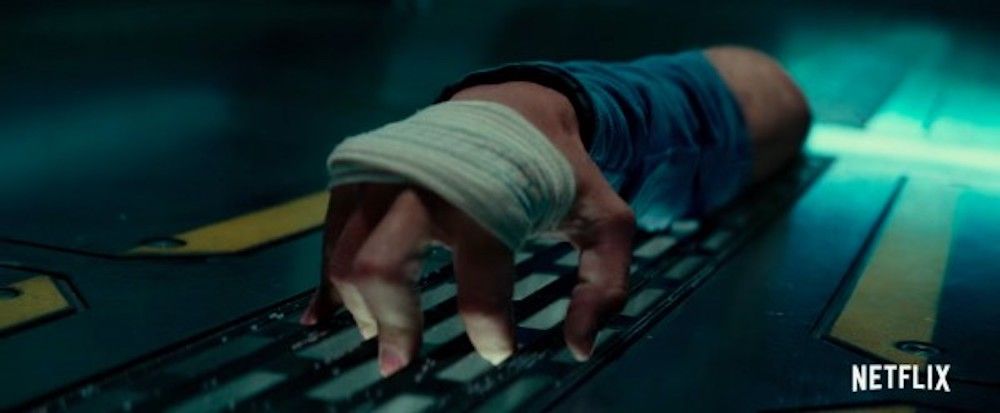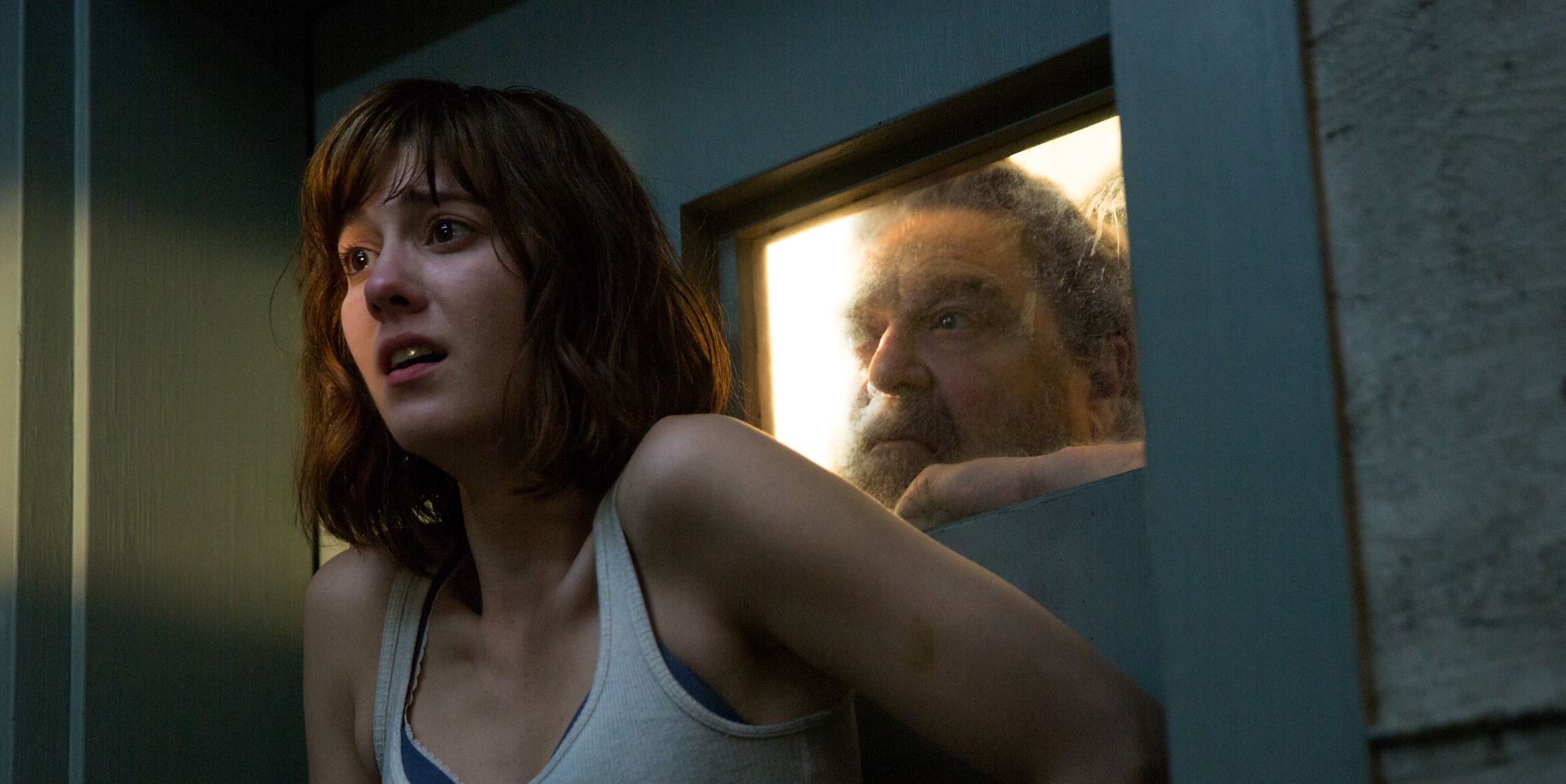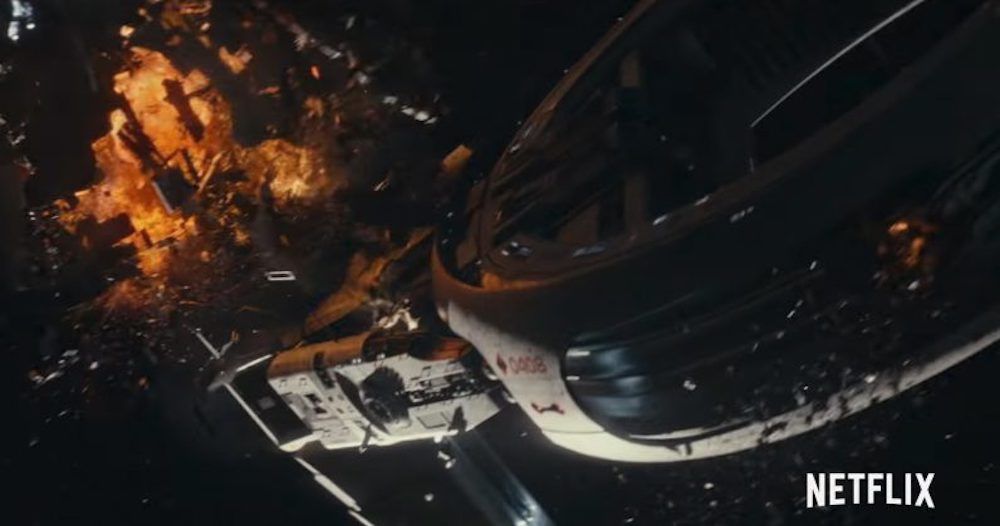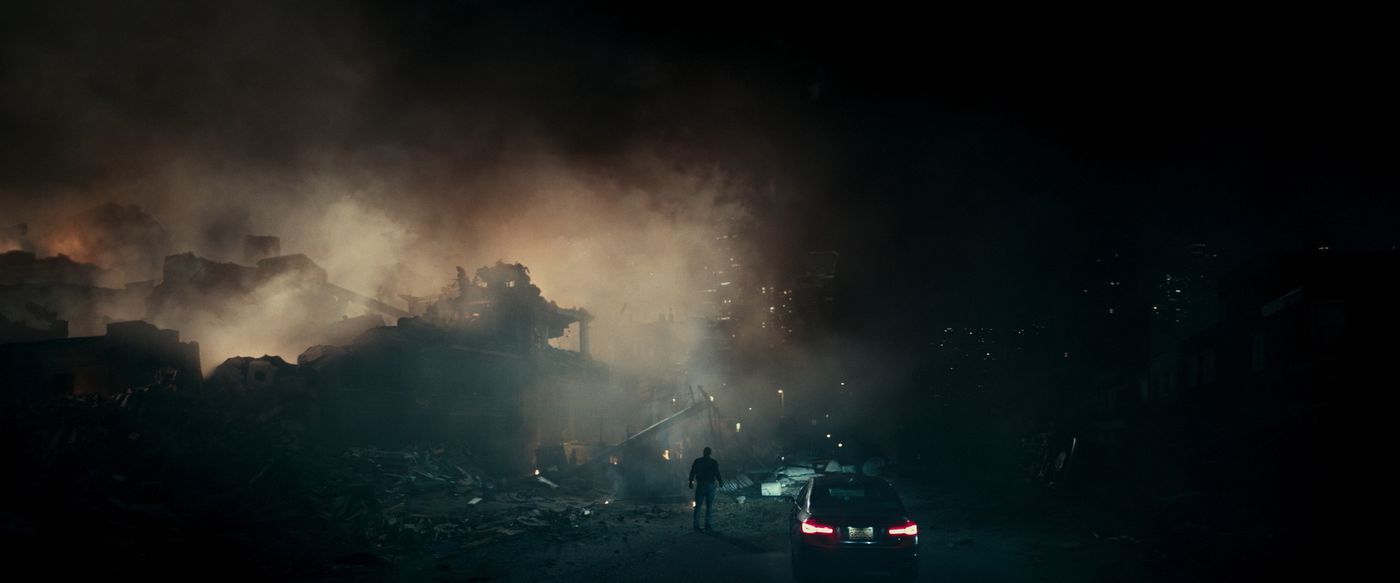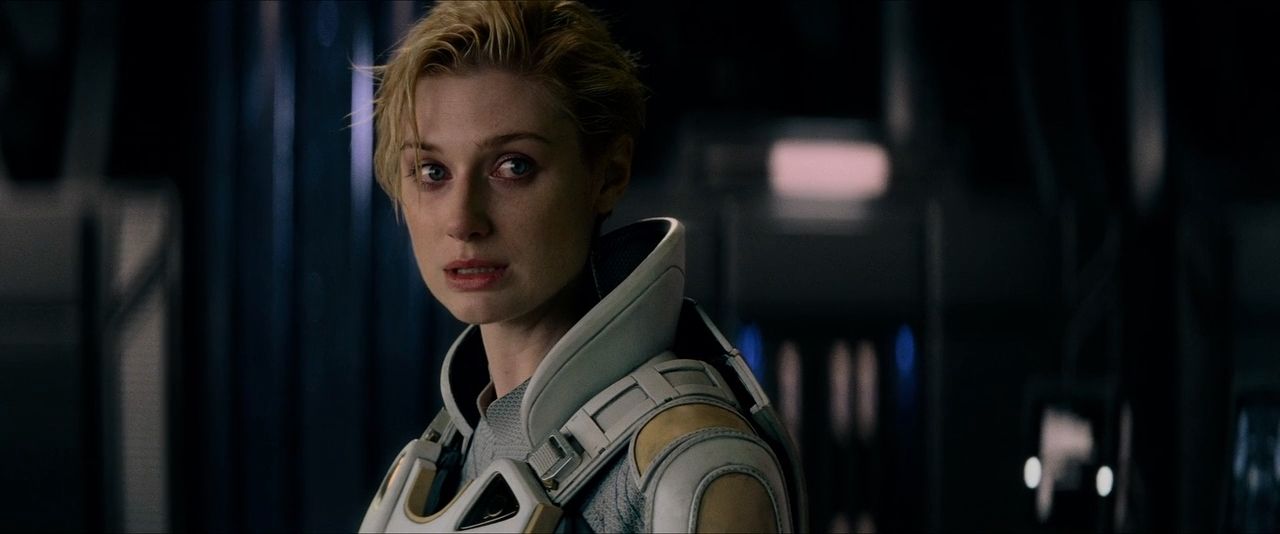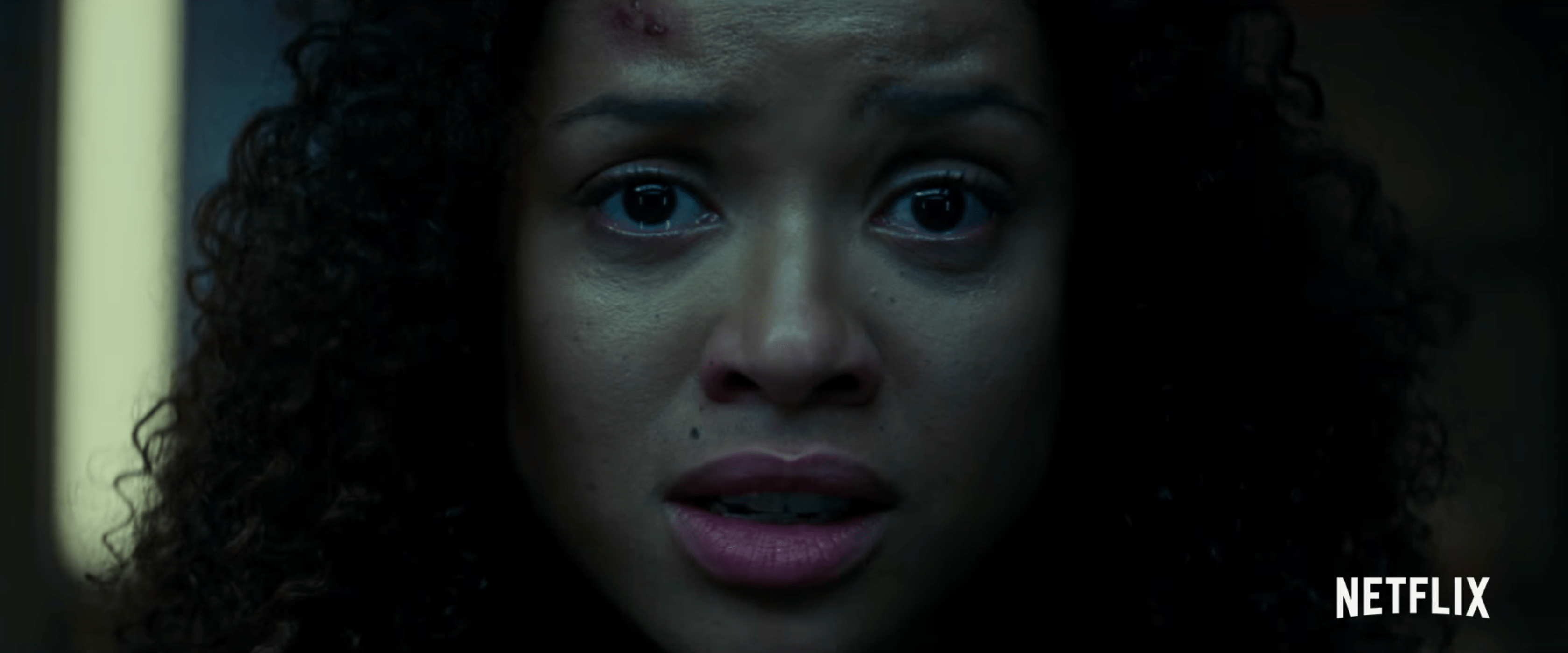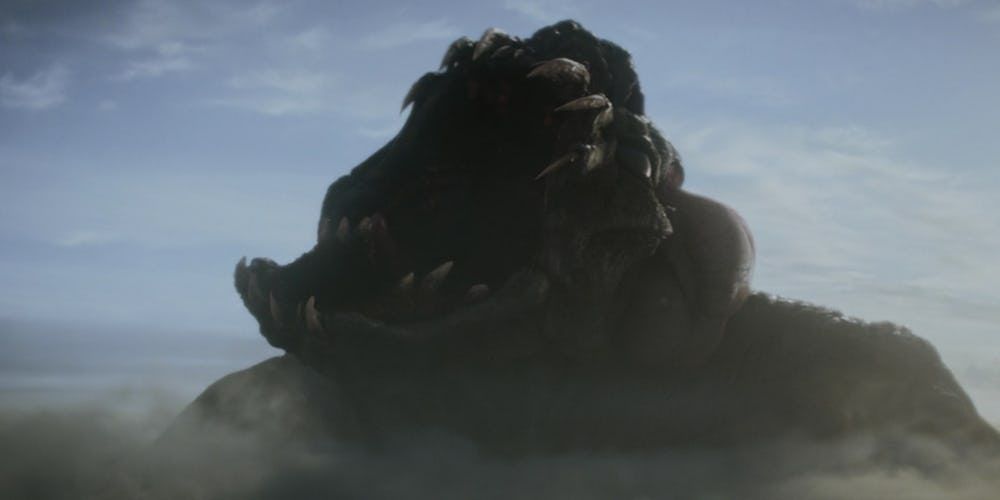The hype-to-backlash cycle occured super-fast with The Cloverfield Paradox. Announced during the 2018 Super Bowl and released on Netflix the same night, the third installment of J.J. Abrams' sci-fi/horror anthology series arrived with tons of excitement. That fervor, however, quickly gave way to disappointment. Critics are savaging the movie, which holds a pitiful 16% on Rotten Tomatoes as of this writing, while audience reactions are highly divided. The truth of the matter is that The Cloverfield Paradox is not a movie well-suited for our Rotten Tomatoes "it's either the best or the worst" era of discourse.
Director Julius Onah and writer Oren Uziel have made a perfectly OK movie that's mostly a lot of fun but has several egregious flaws dragging it down. It's not quite as assured as the original Cloverfield and significantly worse than the excellent 10 Cloverfield Lane. If you're a fan of pulpy, absurd science fiction stories, however, it's got enough going for it to be worth the 102 minutes of your time. Just be sure to measure your expectations. Or just let us do it for you...
SPOILERS for the Cloverfield series
15 LOVED: COMPELLING STORY
The Cloverfield Paradox is absolutely a compelling watch. The plot is simple enough to follow while touching upon complex subjects. A space station is testing out a particle accelerator in an attempt to generate unlimited energy for a world in a power crisis. The experiment seems to work... except that the accelerator sends the space station into a parallel universe, where things get crazy.
The use of a multiverse inspires interesting philosophical drama.
We'll let Neil DeGrasse Tyson critique the scientific accuracy of it, but even if it's mostly BS, the premise bears enough resemblance to theoretical concerns (if not practical ones, thus far) regarding the Large Hadron Collider that it appears just plausible enough to suspend disbelief. The use of the multiverse inspires enough interesting philosophical drama to give this popcorn film some bite.
14 HATED: WEAK CHARACTERS
In Red Letter Media's reviews of the Star Wars prequels, Mr. Plinkett proposed a test to judge the strength of a character: you must be able to describe them without reference to appearance, skills, their relationships or their role in the plot. Only two characters in The Cloverfield Paradox, maybe three if you stretch, can even somewhat pass this test, and only one, Gugu Mbatha-Raw's Ava, can really be considered to have more than one dimension.
Not every movie needs great characters. Look at 2001: A Space Odyssey or Dunkirk to see how a great movie can use barebones characters to its advantage. In all honesty, the first Cloverfield wasn't that impressive in regards to characterization either. For the type of movie that The Cloverfield Paradox wants to be, however, it would be so much better if we felt more for this crew.
13 LOVED: GOOD ACTORS
So how is a movie with such boring characters so watchable in spite of such a major problem? Well, casting those characters with interesting actors certainly helps. Perhaps the biggest gap between the dullness of the written parts and the vibrancy of the performances is Daniel Brühl as Schmidt.
He's not playing so much a character as a variety of reactions to bizarre circumstances, yet those reactions are gripping.
Zhang Ziyi, David Oyelowo and Aksel Hennie similarly manage to carry relatively thankless parts. Chris O'Dowd does well in the comic relief role, one of the more distinctive roles. The two stand-out performances, of course, are for the two best characters: Gugu Mbatha-Raw as the guilt-ridden protagonist Ava and Elizabeth Debicki as the tragic villain Mina.
12 HATED: VAGUE WORLD-BUILDING
The first Cloverfield took place in our world in the present day, nothing out of the ordinary except for the giant monster attack. 10 Cloverfield Lane took place in a post-apocalyptic future, possibly the aftermath of the first movie's chaos. The two settings were easy to get a handle on. The Cloverfield Paradox's world is more annoyingly vague, to the point where it feels sloppy.
We know it takes place at some point in the future. We know there are constant black-outs on Earth, advanced technology in space, there's a whole bunch of vaguely defined political conflicts (Russia and Germany are at war but also their space programs are cooperating?) and no real strong sense of setting beyond that, just a lot of off-hand references. Considering the titular paradox is explicitly screwing with time and space, should we get a better sense of what said time and space is like?
11 LOVED: MOSTLY WORKS AS A STAND-ALONE
One of the things that's most exciting about Cloverfield as a franchise is that it barely resembles your traditional movie franchise. The stories aren't directly connected in any way, nor are the characters outside of minor cameos. While they're all in the same genre, the style of story and filmmaking varies radically between entries.
The Cloverfield series is an ingenius Trojan Horse for original stories in a film market scared of them.
There was some confusion by that Super Bowl ad positioning The Cloverfield Paradox as a prequel to the original Cloverfield. The actual situation is complicated. The plot of this movie sort of explains where the monster in the first movie came from. That said, the connection is so tangential that you can, for the most part, treat this as an original stand-alone film.
10 HATED: FORCED INTO FRANCHISE
There's no artistic reason that The Cloverfield Paradox had to be a Cloverfield movie. In fact, it wasn't initially going to even be a Cloverfield movie! Oren Uziel's original spec script was titled The God Particle and had no Cloverfield connections. The decision to make it a Cloverfield film was purely a marketing decision.
The same was true of 10 Cloverfield Lane, originally an spec script titled The Cellar, and that turned out well. With 10 Cloverfield Lane, however, the connections were both minimal and unforced. The Cloverfield Paradox thankfully isn't extremely reliant on connections, but the connections that do exist, especially in the whole "prequel" framing, feel way more forced. They present themselves in numerous ways that hurt the cohesiveness of the final production.
9 LOVED: SCARY AS HELL
Whatever problems the script has, Julius Onah clearly knows how to direct a horror movie. He's so good at this, he could make a freakin' foosball table scary! The space station scenes never let up the intensity from the moment the station zaps into another dimension, and the various interdimensional forms of death are frightening. Bear McCreary's dramatic musical score adds to the atmosphere of anxiety.
Perhaps one of the reasons Paramount gave the film to Netflix is that the studio balked at the film's body horror.
The first two Cloverfield films were "hard PG-13" affairs, intense but rarely graphic. This one, while not excessive, involves more blood and gore and is rated TV-MA on Netflix. It could be edited down to a PG-13, but the added MA grotesqueness suits the film.
8 LOVED: WILLING TO GET WEIRD
At one point in the middle of the movie, a wall eats Chris O'Dowd's arm. The arm later reappears crawling around like Thing from The Addams Family, moving of its own volition and writing messages. It's played as both funny and scary. More than anything, it's downright bizarre, and it's just one of many bizarre moments throughout The Cloverfield Paradox.
Parallel dimensions, quantum entanglement and other vague scientific mumbo-jumbo provides a good enough excuse for the filmmakers to just go crazy with imagining the assorted threats the astronauts face. In this world, people can cough up worms, have navigational gear in their stomachs and pop up out of nowhere stabbed by wires. The weirdness keeps you on edge throughout the movie, never sure what strange thing will happen next.
7 HATED: LESS PSYCHOLOGICAL THAN 10 CLOVERFIELD LANE
Much of The Cloverfield Paradox isn't too far off from the roller coaster-style thrills of the original Cloverfield. If it were the first sequel (or prequel, whatever), there might not be the same sense of disappointment, at least to the same degree. Unfortunately for this third installment, the second, 10 Cloverfield Lane, was one of the tightest thrillers in recent memory, and this movie looks weak in comparison.
10 Cloverfield Lane succeeded where The Cloverfield Paradox fails in regards to character development.
The strength of its disturbing character dynamics made the horror all the more potent. For as scary as all the interdimensional horrors the Cloverfield Station crew faces, none can measure up to the memorable chills of John Goodman as a man who wants a "daughter" a bit too much.
6 LOVED: GREAT VISUALS
One of the reasons Paramount sold this movie to Netflix was to make up for the film's relatively big budget. Where Cloverfield cost $25 million and the contained 10 Cloverfield Lane only $15 million, The Cloverfield Paradox's budget ballooned up to $45 million. That's not a blockbuster budget, but not in the low budget range the studio wanted to keep this franchise in. Fortunately for viewers, much of that money's onscreen. The production value is impressive.
The Cloverfield Station is a vibrant environment, filled with fun high-tech details like a 3D printer for a kitchen and magnetic putty gluing the place together. The special effects work as everything goes wrong and the station gets destroyed is impressive throughout. J.J. Abrams' regular cinematographer Dan Mindel knows how to shoot a space movie, and he frames beautiful shots while keeping the action comprehensible.
5 HATED: SCENES BACK ON EARTH ARE DULL
As gorgeous and entertaining as the outer space scenes are, the scenes back on Earth are both ugly and just boring. The blackouts provide an easy excuse to cut the lighting budget, but it makes for bland and barely distinguished visuals. Only one shot of a creature in the distance peering through clouds of dusts presents any sense of visual intrigue.
As for the story in these scenes, it's slow and superfluous.
You want the movie to go back to space whenever these scenes start. Roger Davies tries to make something of Michael, Ava's husband back home, but he's left with the task of... well, doing nothing, really. The earthbound scenes stick out like a sore thumb, obvious reshoots added with only one purpose: to vaguely connect to the other Cloverfield movies.
4 LOVED: A SYMPATHETIC "VILLAIN"
A movie like The Cloverfield Paradox doesn't really need a villain. "Space" and "space wierdness" is enough of an antagonist that a human enemy could seem superfluous. The movie does have a human antagonist, but Elizabeth Debicki's Mina isn't your typical villain. She's someone who's making sacrifices for the greater good just like the heroes. It's just that they're from two different worlds, and thus have two different conceptions of that "greater good."
Mina's not a deep character, but she's a highly functional one for the purposes of the story. Her introduction, popping up trapped amidst wires behind a panel on the wall, is one of the movie's scariest moments. Her memories of her own lost crew, similar yet different from the one that teleported to her universe, provides fuel for paranoia.
3 LOVED: EMOTIONAL TURN IN THE THIRD ACT
For its first two thirds, The Cloverfield Paradox is entertaining enough, but doesn't seem like the type of movie to make an emotional connection with the viewer. That changes as it enters its third act and reveals more about Ava. It's at this point the movie is able to make best use of its multiverse premise, by using it as a means to explore guilt and regret.
This could have been a sci-fi tearjerker performance on par with Amy Adams in Arrival.
Ava ultimately decides it's better to face her problems in her own world rather than hide from them in another world. Before she goes, she sends a message to the other world's version of herself. Gugu Mbatha-Raw's acting in this scene is honestly more affecting than any of Sandra Bullock's in Gravity. Had the overall script been better, this could have been a sci-fi tearjerker performance on par with Amy Adams in Arrival.
2 HATED: TERRIBLE ENDING
All the goodwill from that emotional third act gets flushed away due to the extraneous, ridiculous, downright intelligence-insulting final 30 seconds. Honestly, ending on this note, no wonder the reviews are so negative. Last impressions are important, and The Cloverfield Paradox botches the landing with the sudden appearance of a monster akin to the one from the first Cloverfield.
10 Cloverfield Lane got some criticism for its sudden UFO ending, but that ending actually served a narrative purpose, showing Michelle could fend for herself in the apocalypse and didn't need to be shielded from the world. The monster at the end of this movie, on the other hand, has no narrative purpose except fanservice and more forced extended universe tie-ins. It actively weakens the story that came before.
1 HATED: THE RELEASE STRATEGY
Yes, it's cool that Netflix can pull a Beyoncé, announce the release of a big movie during an ad break and have it up streaming just a couple hours later. But you know what would have been cooler? Doing the same sort of surprise announcement but with an actual theatrical release. Paramount was going to release The Cloverfield Paradox in theaters, but after a year of box office flops ranging from mother! to Monster Trucks, the studio let Netflix handle the release.
It's a commercially-minded science fiction horror spectacle that would be fun to watch with a crowd.
For all its flaws, The Cloverfield Paradox is the sort of movie that absolutely would benefit from big screen viewing: it's a commercially-minded science fiction horror spectacle that would be fun to watch with a crowd. It might have also been more fairly reviewed if not attached to the whole "Netflix is revolutionizing and/or ruining cinema" narrative that's been the big cinephile debate of the past few years.

